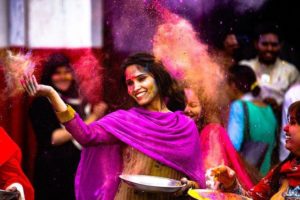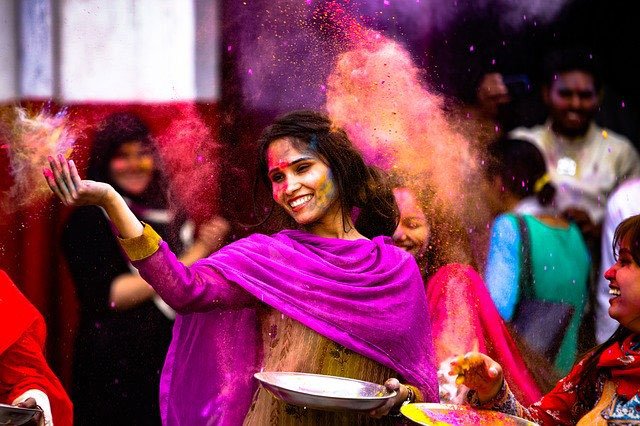With spring just around the corner, we’re here to share with you an exceptional and colorful celebration of life and new beginnings in India.
The Holi festival, held in India and Nepal, is a special occasion marking the beginning of spring and celebrating the triumph of good, friendship and love. The Holi color festival usually falls on the last full moon of the year’s lunar month, which is why the dates of the celebration may vary. This year, the festival dates are the 9th of March for Holika Dahan and the 10th of March for Holi.
Legends and origin of the Holi festival
The origins of the festival can be traced down to various legends, one of which is the legend of the demon King Hiranyakashipu, who wished to be worshipped by everybody as a god, and his son – Prahlada, who refused to worship his father and devoted himself to Lord Krishna.
Hiranyakashipu and his sister Holika were infuriated with Prahlada’s decision and made the decision to burn him on a pyre. Holika lured her nephew to the pyre, enchanting a special spell to protect herself but as soon as the flames had started burning, the special protection passed on to Prahlada, leaving Holika burned to death. Legend says that after this turn of events, Lord Krishna appeared on the scene himself and killed the treacherous demon Hiranyakashipu.
This is the idea of Holika Dahan, which is an event of burning a big pyre in an exact period of time after sunset. Some of the spectators of the bonfire smear the ashes of the pyre on their faces as a means of cleansing their body and soul.
According to another legend, as a child, Lord Krishna had been fed with milk poisoned by a demon, which resulted in his skin turning a bright blue color. He grew up conscious of his skin color, afraid of being pushed away because of it. His mom, being a witness of his fear, started encouraging Krishna to paint himself different colors. This is why Hindi celebrates with splashes of color – this way they fight their fears, create friendships and spread love.
The meaning of colors
 Back in the day, the colorful powders called “gulal” were produced at home. People used different flowers and tree petals, dried them and then ground to dust. There are a couple of main colors used in the festival, symbolizing different virtues.
Back in the day, the colorful powders called “gulal” were produced at home. People used different flowers and tree petals, dried them and then ground to dust. There are a couple of main colors used in the festival, symbolizing different virtues.
Red is the color of love, fertility, and beauty. This is why brides in India wear red garments in their wedding day.
Yellow is almost a synonym of turmeric in India. Turmeric is not only a spice used for cooking but also an herb with healing properties. In some Hindi ceremonies, people cover themselves in turmeric to purify themselves. Its smell also helps them to relax.
Green is the color of spring and the start of new lives and blue represents the skin color of Krishna.
Nowadays, the colors used are mainly synthetic and tints you will often see are purple and pink. Although the colors have changed, the idea of the festival stays the same – to spread love and positivity, and to let go of all the bad thoughts.
For any enthusiast who wants to visit the Holi festival, make sure that you wear long-sleeved clothes as some of the tinted powders might irritate your skin. After the event, go straight to the shower where you can wash the colors off with lukewarm water. Our last suggestion is just to enjoy and soak up this vibrant Holi festival!
